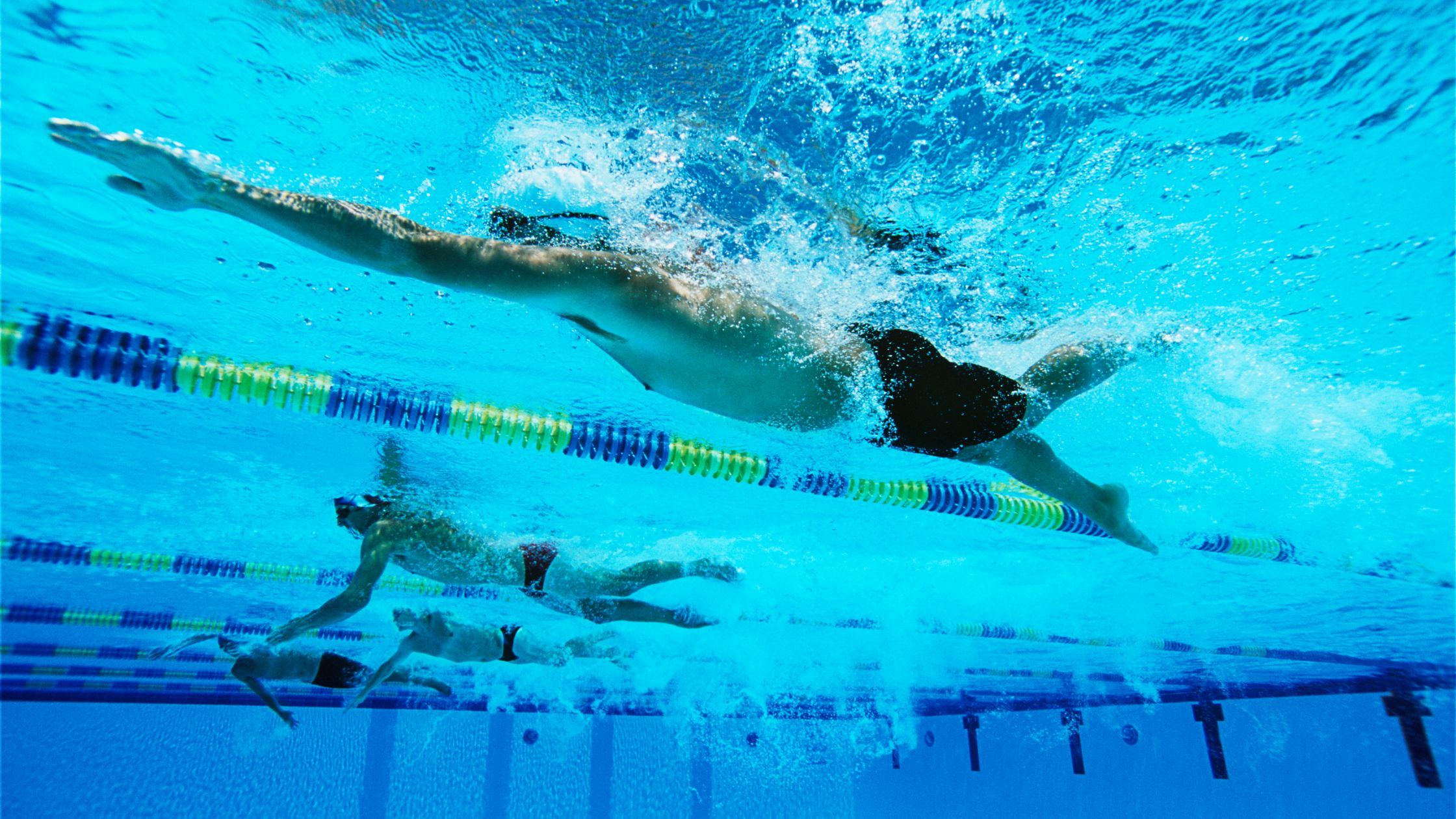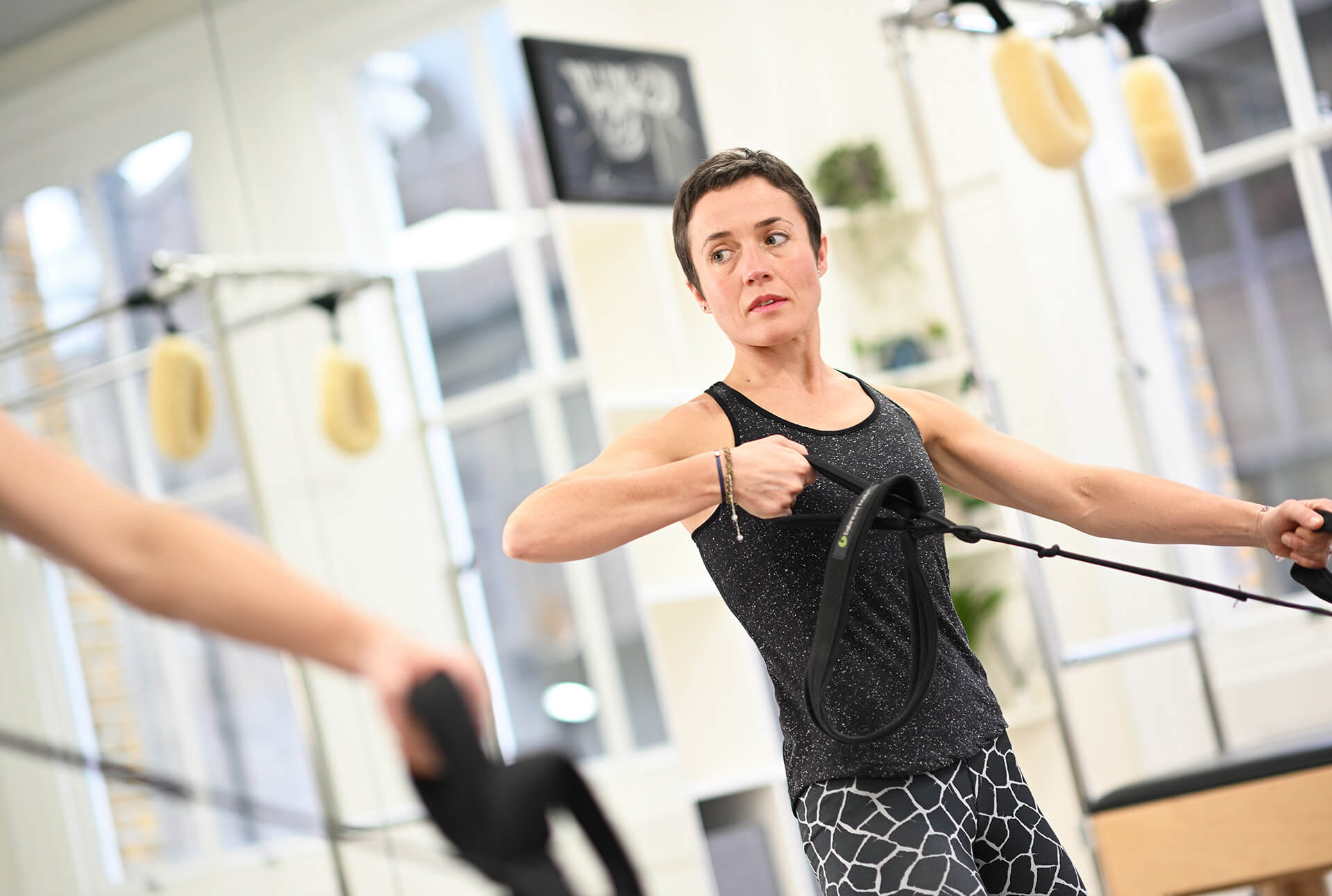Key Contributor: Susie Martin, Chartered Physiotherapist
Are you a keen swimmer? Are you looking for other types of exercise to improve your performance? Are you wondering if Pilates is good for swimmers? Have you ever considered Pilates?
The short answer is – yes! Not only do lots of the Pilates exercises look like swimming but there is even a Pilates exercise called ‘swimming’!
Pilates is a system of exercises for strengthening the whole body, invented at the beginning of the 20th century. Initially practiced by a very small select group of people at the original studio of Joseph Pilates, Pilates grew in popularity following his death until it became the internationally recognised form of exercise that it is today.
The popularity is due to the improvements that Pilates enthusiasts notice in their bodies after practicing including improved strength, flexibility and a great sense of vitality.
The Pilates exercise repertoire has a great deal to offer the swimmer looking to improve their performance and prevent injury. We explore exactly how below!
Quick Summary
Pilates has the potential to improve the performance of keen swimmers through focussing on
- Flexibility: Pilates can improve muscle flexibility and joint mobility.
- Strength: Pilates uses body weight to build strength but can also be performed on resistance machines and using small equipment such as hand weights and resistance bands.
- Positioning: Much of Pilates takes place in a horizontal plane – so it is very applicable to swimming.
- Awareness: Pilates emphasises mind-body connection so is great for improving body awareness.
- Breathing: Pilates has a strong focus on breathing awareness and technique, which is highly relevant for swimming.
- Injury prevention and recovery: Pilates has a wide variety of exercises, from gentle to challenging so is a great way to recover from illness and injury. In addition, the variety helps to work different muscle groups and provide balance that helps to protect from overuse type injuries.
The benefits of Pilates for swimmers
Flexibility
Pilates is great for increasing the flexibility needed for swimming. Not only do swimmers need great range of motion in their shoulders but they also require mobility in the upper spine and good hip range of motion too.
Spinal flexibility in the upper back allows you to lift your head out of the water easily, without having your legs sink as a result.
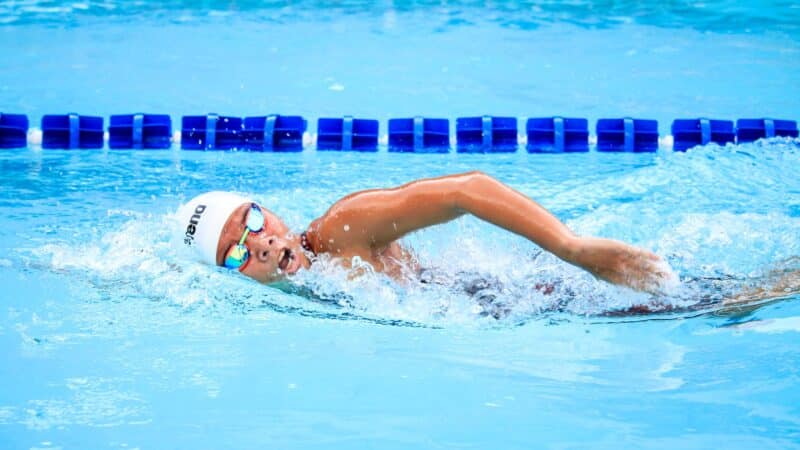
Mobility in rotation of the hip joints is important for breaststroke, whilst hip extension mobility is important for front crawl. These are all things that Pilates is good for helping you work on.
Body Position
The first thing you might notice, if you watch someone doing a Pilates class, is that many of the exercises take place lying down, in exactly the position you occupy for swimming! This means that the exercises are specific and functionally relevant for swimming.
Body Awareness
Pilates is great at increasing body awareness. A good Pilates teacher will not just instruct movement but they will use language that will invite you to notice your body position and sensations.
The more attuned you are to your body, the more you are able to make fine adjustments to your position. Being able to position yourself well in the water is important for reducing any drag in the water that might slow you down and make swimming more work.
Breathing
Integral to Pilates is using breath to facilitate movement. The creator of Pilates, Joseph Pilates, was known for his emphasis and clear instruction on breath. He considered it a very important part of his work. Today, Pilates instructors still learn how to cue their class in breathing.
Flowing breath is important for supplying your muscles with the oxygen they need to fuel movement. It also helps us to stop faulty movement patterns that come with breath holding.
In addition, movements of your ribcage that occur with breathing can facilitate whole body movement. For example, when you take a breath in, the front ribs move apart, and the back ribs move towards each other – this makes a backbending movement easier. This is also how we breath during breaststroke – breathing in at the same time as lifting the head out of the water.
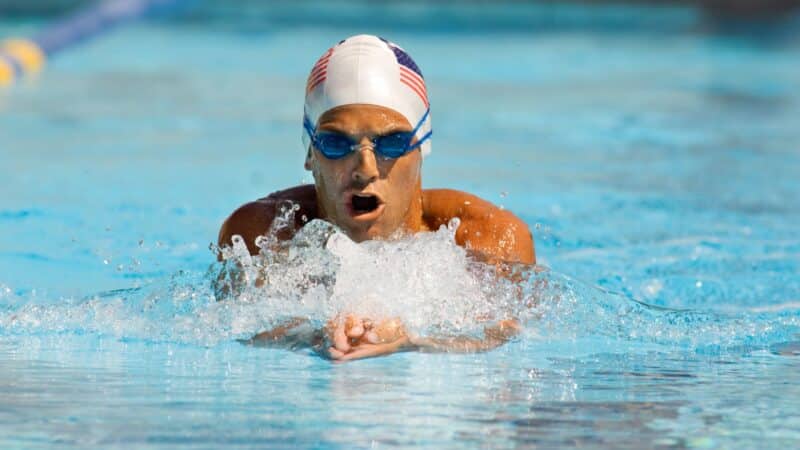
Strength
Swimmers need to be strong but in a way that doesn’t compromise their flexibility. Pilates is great for building strength, particularly muscles of the torso, but also in the arms. The combination of strength and flexibility in the body again helps with body position but also with propulsion through the water.
Pilates helps to build endurance in the shoulders in the overhead position, but, especially with equipment or resistance bands, can build the strength needed for the pull through the water in front crawl.
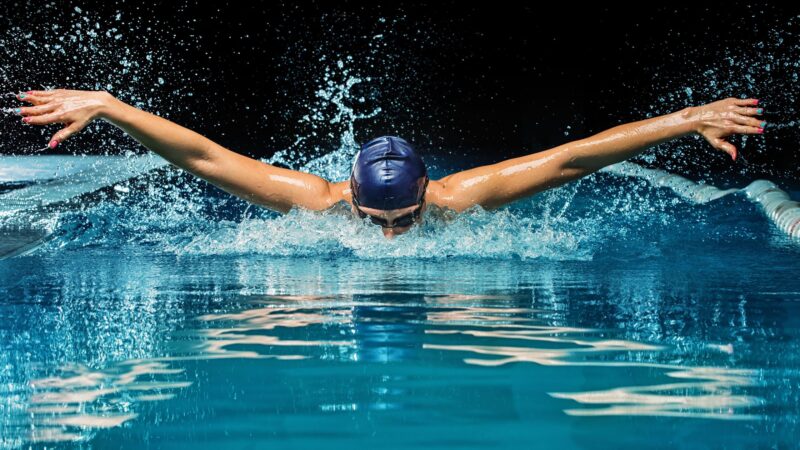
Injury prevention
By working on all the above factors, swimmers can reduce the likelihood of injuries and prolong their swimming life. This is because a flexible, mobile and strong body can distribute the stresses of certain activities more equally throughout the body.
Unfortunately, swimmers can be prone to certain injuries, which are often related to inefficient movement and imbalances in flexibility and strength. Swimmers are particularly prone to pain and injury in the shoulders, back, knee and neck due to the demands of the activity.
Injuries can also happen because of overtraining. Pilates presents an opportunity to cross train on rest days from swimming, in a way that is low impact and low intensity but still supports the physical requirements of the sport.
Top 5 Pilates Exercises for Swimmers
Pilates for swimmers: Pilates Prone Press Up
Prone press up is a brilliant, supportive introductory exercise to backwards bends. All of the exercises that improve mobility and strength for back bends will improve flexibility in the upper back for breaststroke, front crawl and butterfly. This will help to distribute forces along the whole spine, reducing extra stresses on the lower back.
Pilates for swimmers: Pilates Dart
Dart is a progression of a backwards bend for the upper body, since you are no longer using the arms to support your weight. This exercise therefore adds more of a strength challenge to upper back mobility. The full version of Dart sees you using the muscles of the entire back of the body – with your legs lifted, and adds endurance to the arms, with a pumping action of the hands.
Pilates for swimmers: Pilates Swimming Exercise
We couldn’t write a piece about Pilates for swimmers without including the classic Pilates swimming exercise! This exercise progresses the Dart into a position where the arms are working overhead, so this is ideal for working on strength for front crawl.
Pilates for swimmers: Pilates Arm Arcs exercise
Arm arcs are a great exercise for warming up the shoulders and gradually working up into the full overhead range. For most people this range can become limited, particularly as we get older. However, some people with excess flexibility don’t need the stretching component of this exercise – instead, they can work on movement control.
Pilates for swimmers: Book Openings exercise
Book openings are a great exercise for combining upper back mobility and shoulder flexibility. Book openings concentrate on rotational movement which is important for front crawl and backstroke. However, for those who are particularly stiff in backbending, rotation can sometimes be an easier place to start to work on movement.
Pilates for swimmers: Single Leg Stretch
Single leg stretch is a great exercise for building core strength. This exercise takes place lying on your back so is particularly good for building core strength for back stroke.
Pilates equipment exercises for swimmers
Whilst mat based Pilates are more well known and accessible to all, the full repertoire of Pilates exercises takes place on specialised Pilates equipment. Read on to find out what kind of Pilates equipment exercises are good for swimmers!
Pilates for swimmers: Feet in Straps on the reformer
Feet in Straps on the reformer is a wonderful exercise for focusing on hip mobility in rotation and flexibility of the inner thighs. This is particularly helpful for breaststroke and addresses common factors that contribute to swimming related knee pain.
Pilates for swimmers: Prone long box pulling straps on the reformer
Pulling on straps on the reformer is a brilliant exercise for working on your front crawl pull through, since the cables and spring resistance mimic the resistance of the water.
Pilates for swimmers: Prone shoulder press on the reformer
Prone shoulder press on the Reformer is a great way to work on strength in the overhead position, and mobility of the shoulders and upper back.
Pilates for swimmers: Swan on the Chair
Swan on the chair is a great way to begin working on backbend movements. The pedal is attached to springs, which help to push the pedal up. This means that you are assisted into the backbend position, instead of having to use your arms to work hard as you might do in any cobra style exercise on a mat.
Conclusion
Although Pilates may on the surface sound like quite a different type of exercise to swimming, there are many aspects of swimming performance that Pilates can help with, through it’s attention to strength, flexibility, awareness and breathing technique. Consider adding Pilates for swimmers to your routine and let us know the impact this has for you!
Feeling inspired?
If you want to experience the Complete difference and discover the benefits of one-to-one Pilates, book a session at one of our London studios or online today.
Our physiotherapist-led Pilates studios in Chelsea, our Angel Pilates studio and our Pilates studio in City, offer a highly tailored approach to your Pilates training, whether your goal is to manage a health condition, rehabilitate from an injury or to improve your strength and fitness.
Get in touch with us via email or contact us on 0203 764 5668 for further information.
Education is key:
These blogs are designed to give information to everyone, however, it is important to remember that everyone is different! If you have not seen one of our therapists and have any questions about injuries, what you have read or whether this may be useful to you, please just ask. We are more than happy to help anyone and point you in the right direction. Our biggest belief is that education is key. The more you understand about your injury, illness and movement, the more you are likely to improve.


